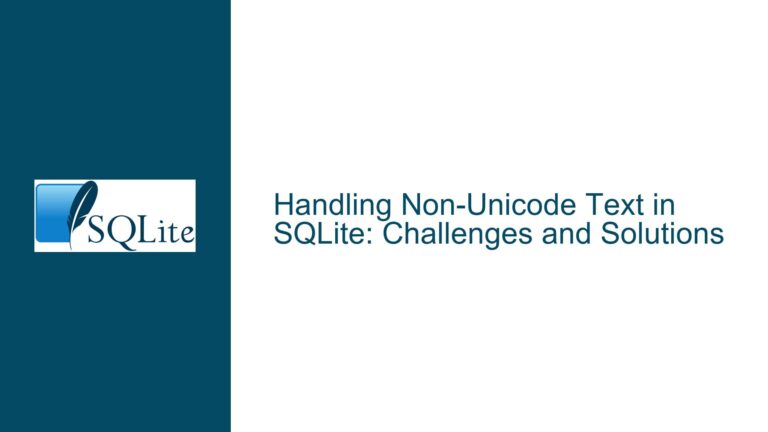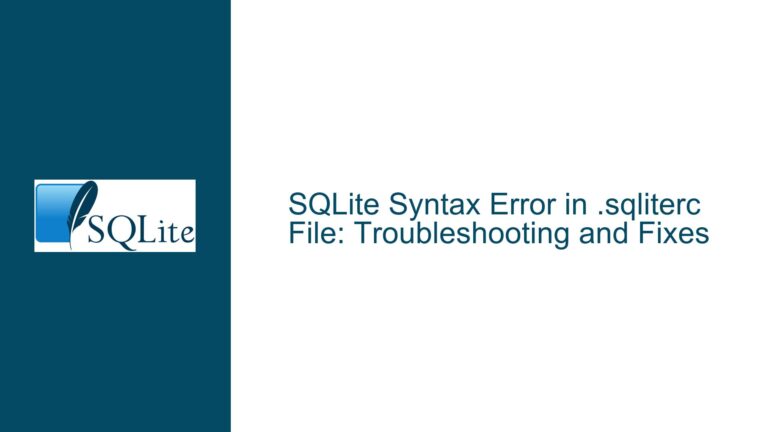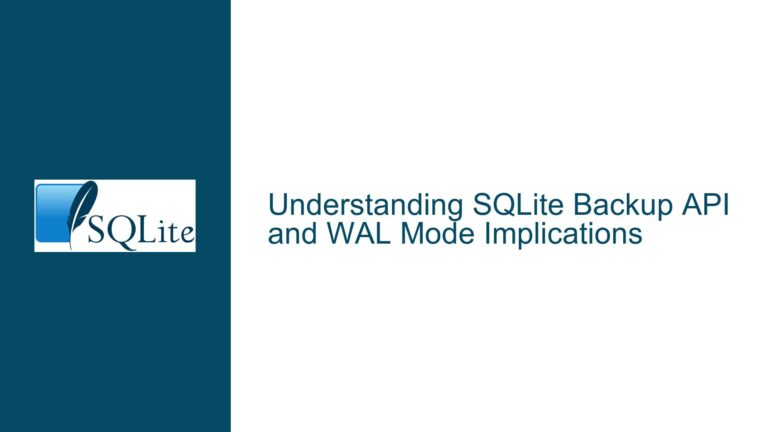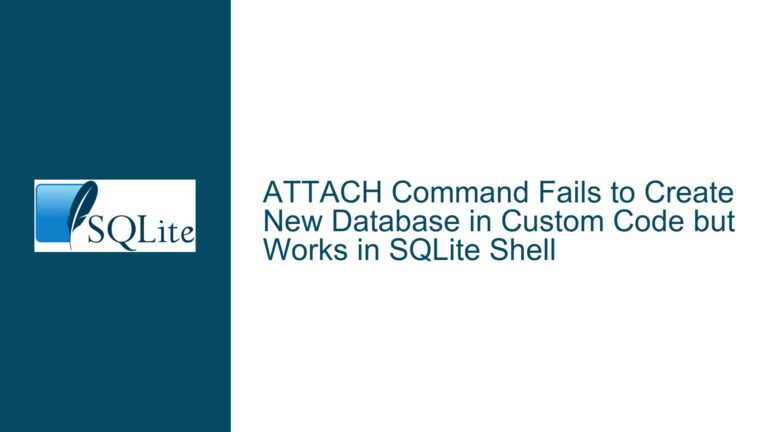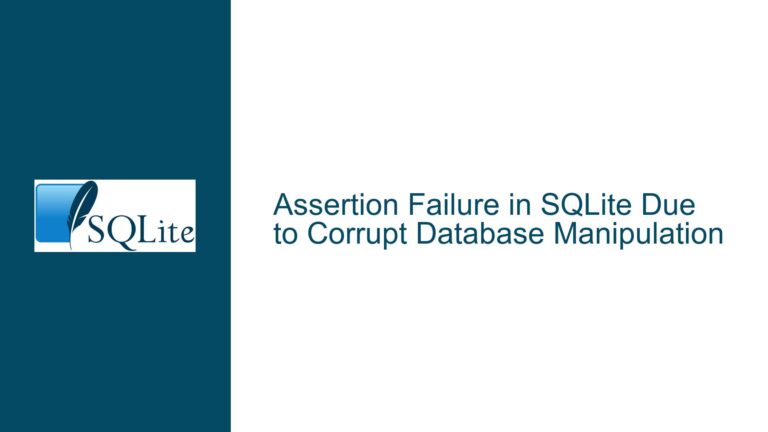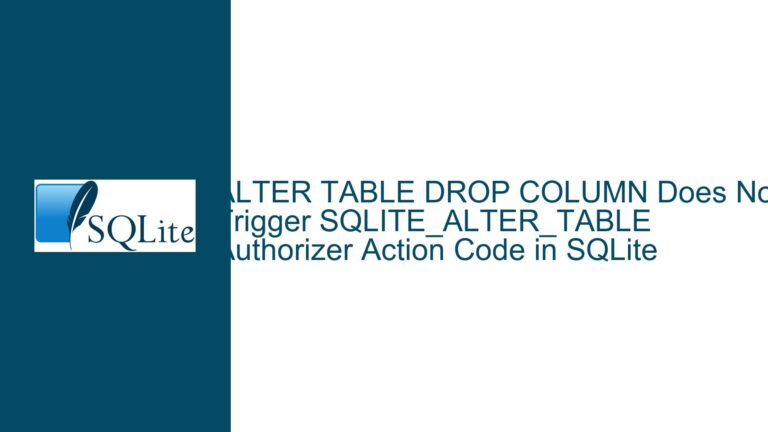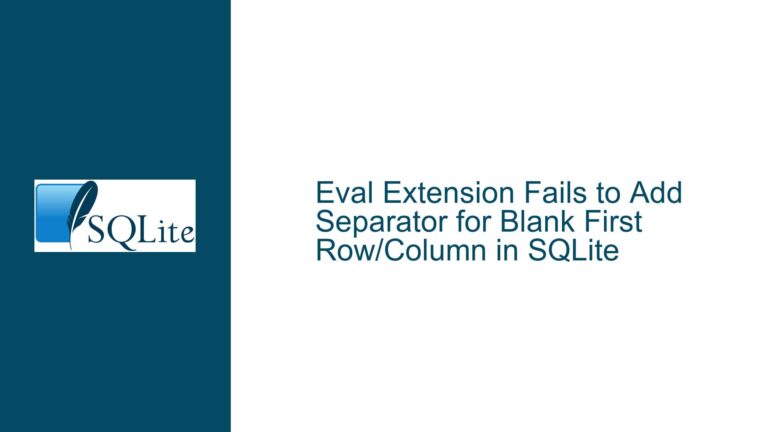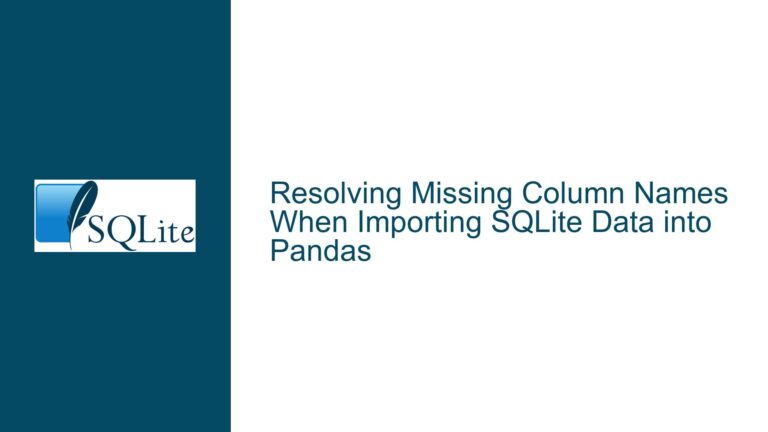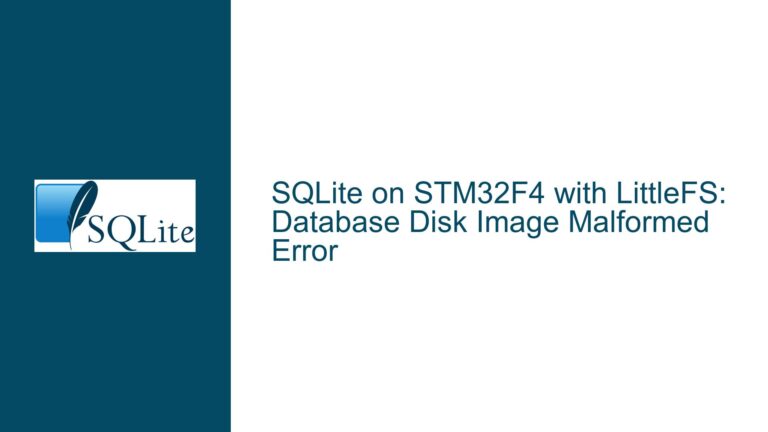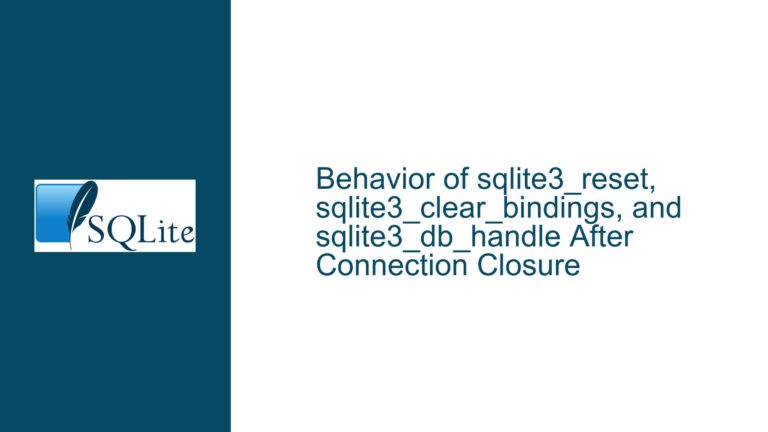Handling Non-Unicode Text in SQLite: Challenges and Solutions
Understanding Non-Unicode Text Handling in SQLite SQLite is a lightweight, serverless database engine that is widely used for its simplicity, portability, and efficiency. One of its core design principles is to handle text data as UTF-8 or UTF-16 encoded strings, which aligns with modern Unicode standards. However, there are scenarios where non-Unicode text data must…
